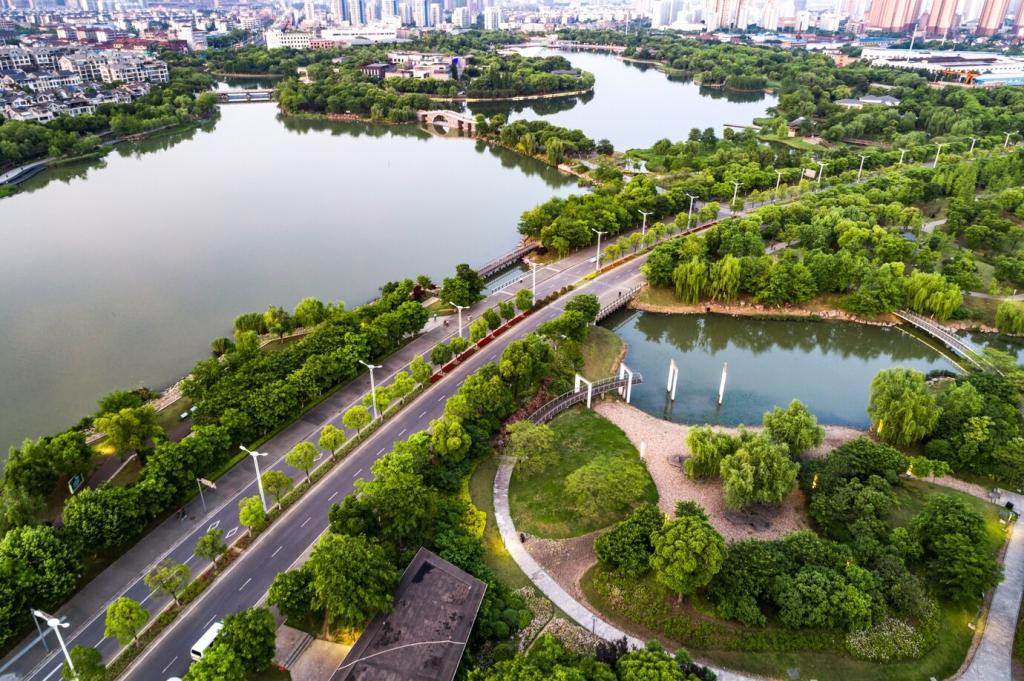Smart Cities: Integrating Eco-Friendly Innovations
Smart cities are revolutionizing urban living by weaving together technology, data, and sustainability to enhance quality of life and reduce environmental impact. At the heart of smart cities lies the integration of eco-friendly innovations, transforming everything from transportation to infrastructure. This symbiotic relationship between digital advancements and green initiatives is critical as global populations become increasingly urban. By prioritizing eco-conscious solutions, smart cities are not just reimagining how we live but are also taking significant steps towards a more sustainable, resilient future.

Green Urban Infrastructure
Sustainable architecture and construction practices are core elements in the development of smart cities. Using recycled or renewable materials, energy-efficient designs, and adaptive reuse of existing structures, eco-friendly buildings minimize environmental impact while maximizing comfort. Technology enables architects and engineers to monitor and manage energy consumption in real time, adjusting lighting, heating, and cooling based on occupancy patterns. Such buildings often incorporate green spaces, rainwater harvesting, and solar panels, ensuring that the construction process and the end result are environmentally sound.

Smart Transportation Solutions
The shift toward electric vehicles (EVs) and shared mobility platforms is a hallmark of smart city transport innovation. Electric buses, cars, and bicycles powered by renewable energy sources reduce emissions while offering convenient alternatives to traditional, fossil-fuel-powered options. Car and bike-sharing apps make it easy for citizens to access vehicles on demand, decreasing the need for individual car ownership and lowering traffic congestion. With the support of real-time data, these services can optimize vehicle availability and routing, ensuring efficient, sustainable travel for everyone.

Renewable Energy Integration
Solar and Wind Power Deployment
Deploying solar panels and wind turbines throughout the urban landscape marks a significant step in reducing dependence on fossil fuels. Rooftops, parking lots, and public spaces are transformed into micro-power plants, generating clean electricity close to where it is used. By connecting these installations through intelligent grids, surplus energy can be stored or fed back into the network for use during peak demand. Citywide incentives and real-time monitoring make it easier for both individuals and businesses to adopt renewable energy, accelerating the city’s progress toward environmental goals.
Smart Grids and Energy Storage
Smart grids equipped with digital sensors and automation enhance the distribution and use of electricity in real time. These networks balance supply and demand, integrate diverse renewable sources, and instantly respond to outages or fluctuations. Energy storage solutions such as advanced batteries allow cities to store excess renewable power for later use, ensuring stability and resilience even during cloudy or windless periods. By optimizing the flow of electricity, smart grids reduce waste, support electrified transport, and ultimately drive the adoption of clean energy on a citywide scale.
Building Energy Management Systems
Building Energy Management Systems (BEMS) are revolutionizing energy use in commercial and residential spaces. By continuously monitoring consumption patterns, these systems automatically adjust lighting, heating, and cooling for maximum efficiency without sacrificing comfort. Integration with renewable energy sources like rooftop solar and battery storage makes buildings active participants in a city’s clean energy network. Not only do BEMS contribute to reduced carbon emissions and operational costs, but they also empower occupants with real-time feedback and suggestions for further environmental improvements.
